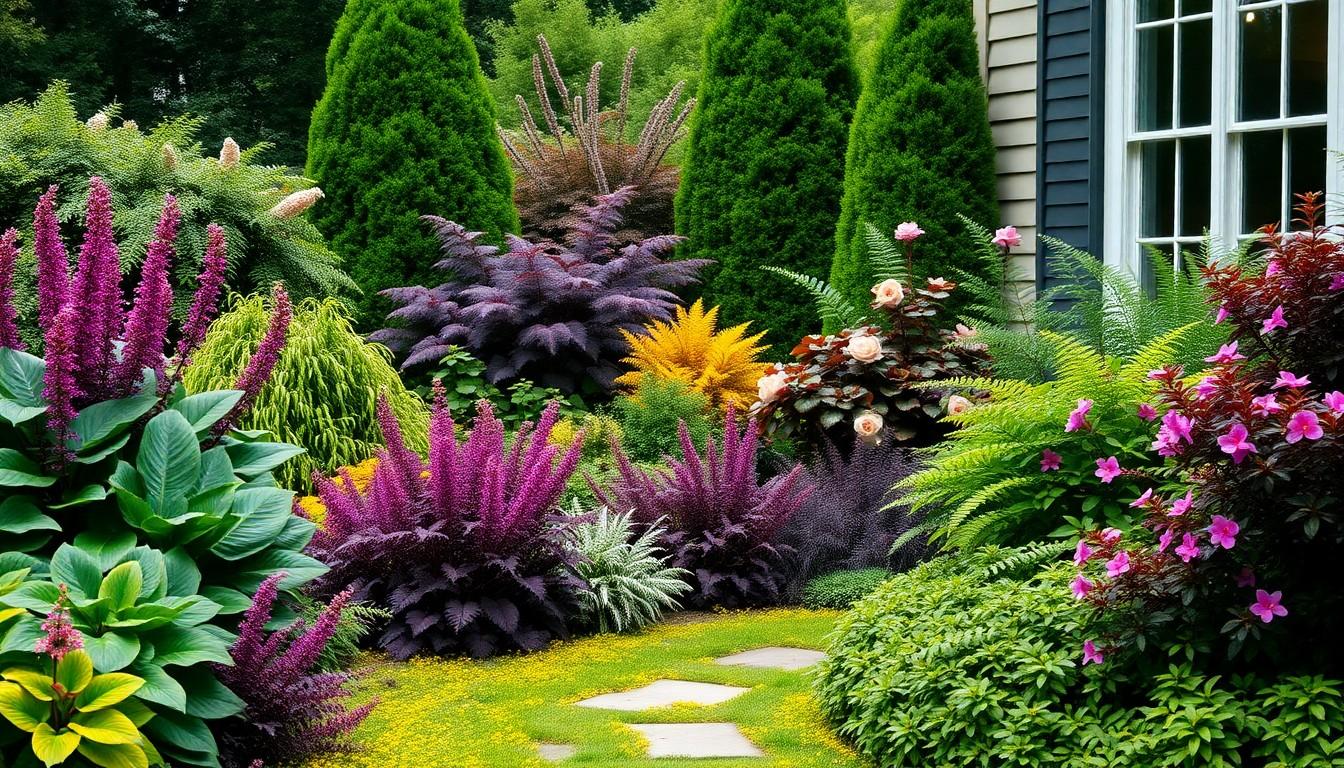The Best Fluffy Pancakes recipe you will fall in love with. Full of tips and tricks to help you make the best pancakes.

Plants for North Side of House: Transform Your Shady Space into a Lush Garden Oasis
When it comes to gardening, the north side of a house often gets a bad rap. With its shady conditions and cooler temperatures, many believe it’s a no-go zone for plants. But hold on! This overlooked area is a hidden gem waiting for the right greenery to shine. Imagine transforming that dull, dark corner into a lush oasis, all while giving your home a touch of charm.
Choosing the right plants for the north side can be a game changer. Not only can they thrive in low light, but they can also add vibrant colors and textures to your landscape. From shade-loving perennials to evergreens that stand tall, the possibilities are endless. So why not embrace the challenge? With a little creativity and the right plant selection, that north side can become the envy of the neighborhood.
Key Considerations For Planting
Gardeners should consider several factors when planting on the north side of a house. Attention to these details can lead to a thriving garden, even in shadier conditions.
Sunlight Exposure
Sunlight exposure determines plant growth on the north side. Limited direct sunlight means shade-loving plants thrive best. Some options include hostas, ferns, and astilbes. Uplighting enhances the visual appeal during evening hours. Regular monitoring ensures that plants receive adequate light as seasons change.
Soil Type
Soil type significantly influences plant health. Usually, the north side may have moisture-retentive soil. Heavy clay could hinder drainage, while loamy soil provides a balanced environment. Testing the soil pH beforehand aids in selecting compatible plants. Amendments may improve the soil structure, promoting healthier root growth.
Climate Adaptability
Climate adaptability plays a crucial role in plant selection. Cold winters and mild summers often characterize northern environments. Selecting hardy perennials helps plants survive temperature fluctuations. Consider native plants, as they’re well-suited to local climates. Choosing the right plants ensures resilience throughout the seasons.
Best Plants For North Side Of House

Selecting the right plants transforms the north side into a thriving garden space. This area can excel with the appropriate choice of plants that thrive in shade and cooler conditions.
Shade-Loving Perennials
Hostas stand out for their lush foliage and variety of colors. Astilbes deliver feathery blooms, adding grace to shaded locations. Ferns offer intricate textures, creating a diverse display with minimal sunlight. Solomon’s seal contributes arching stems and delicate flowers, enhancing depth in gardens. All these plants flourish in moisture-retentive soil, making them ideal for the consistent shade found on the north side.
Evergreen Shrubs
Evergreen shrubs maintain year-round interest with their vibrant green foliage. Boxwoods serve as excellent choices for structure and formality in garden beds. Rhododendrons bring beautiful blooms in the spring, contrasting with their dark leaves. Varieties like hemlocks adapt well to shade and provide a soft texture. All keep their color even during winter, ensuring that the garden remains visually appealing throughout the year.
Ground Covers
Creeping thyme spreads easily, tolerating foot traffic while offering delightful scents. Green and gold provides vibrant foliage that brightens dim areas. Lamium, or dead nettle, brings both silvery leaves and unique flowering options, suitable for diverse conditions. Each of these ground covers creates a lush carpet that suppresses weeds and retains soil moisture, making them essential for effective garden design.
Maintenance Tips
Maintaining a garden on the north side of a house requires attention to specific needs. Prioritizing care ensures plants thrive in shadier conditions.
Watering Requirements
Watering patterns depend heavily on the types of plants selected. Shade-loving plants often require less water than sun-loving varieties. Monitor soil moisture regularly; it should remain consistently damp but not soggy. Utilizing mulch helps retain soil moisture and regulates temperature. Watering early in the morning or late in the afternoon minimizes evaporation. Adjust watering frequency depending on rainfall and seasonal changes. Always consider the plants’ specific needs, as some may require supplemental irrigation during dry spells.
Pruning Practices
Pruning plays a crucial role in maintaining healthy plants. Regularly trimming dead or damaged branches promotes healthy growth and enhances appearance. Specific plants may require different pruning techniques, so understanding individual needs is vital. Early spring often serves as the best time for most pruning, guiding new growth. Removing spent flowers encourages additional blooms in perennials. Pay attention to the growth pattern of each plant; shaping can enhance their form and improve airflow. An organized pruning schedule not only keeps the garden tidy but also encourages robust plant health.
Conclusion
Transforming the north side of a house into a thriving garden is entirely achievable with the right approach. By selecting shade-loving plants and ensuring proper soil conditions, anyone can create a lush and inviting space. The beauty of this area lies in its unique potential for diverse plant life that flourishes in cooler, shadier environments.
With thoughtful planning and maintenance, the north side can evolve into a stunning retreat filled with vibrant colors and textures. Embracing this often-neglected area not only enhances the overall landscape but also fosters a deeper connection with nature. A carefully curated garden on the north side is sure to impress and provide a tranquil escape year-round.
